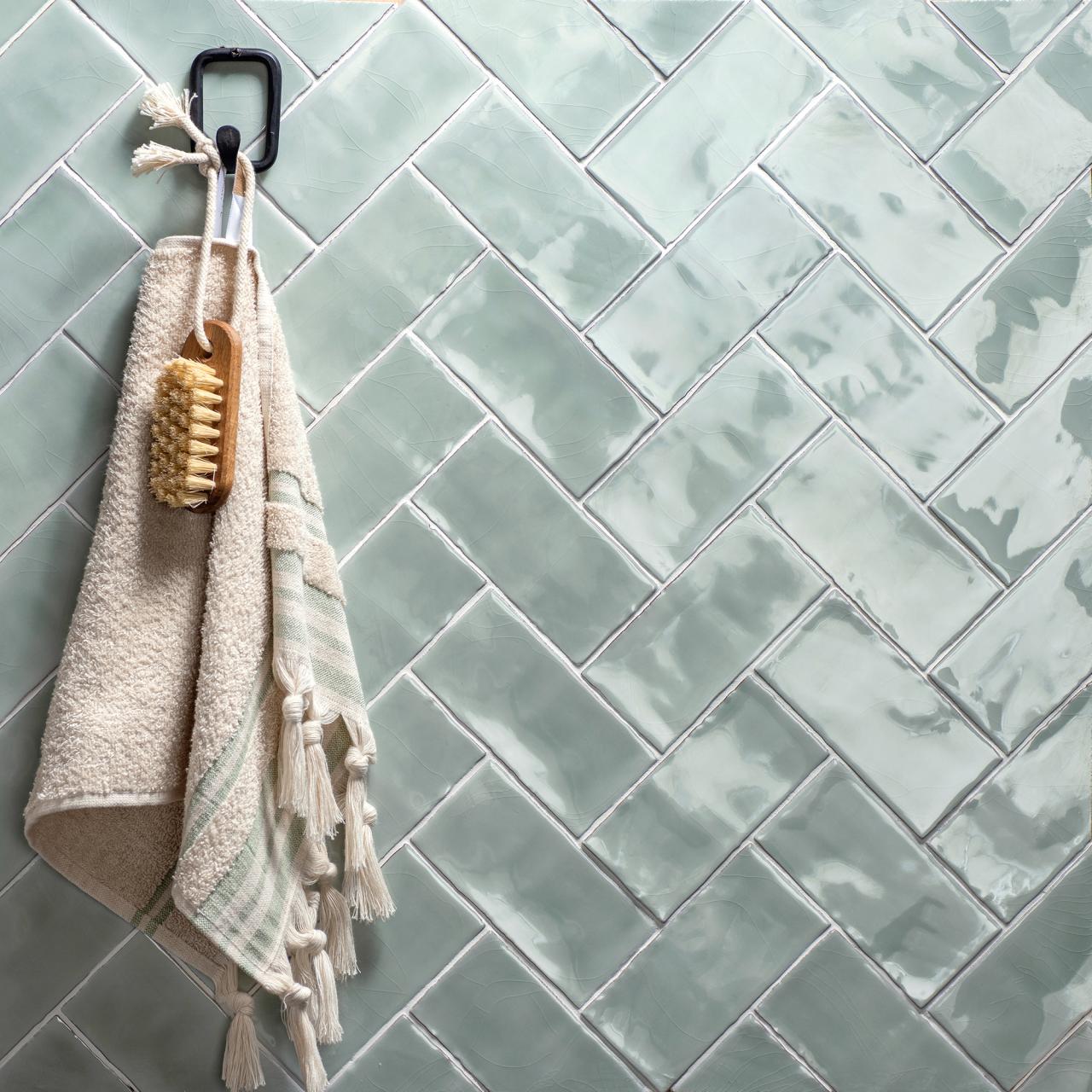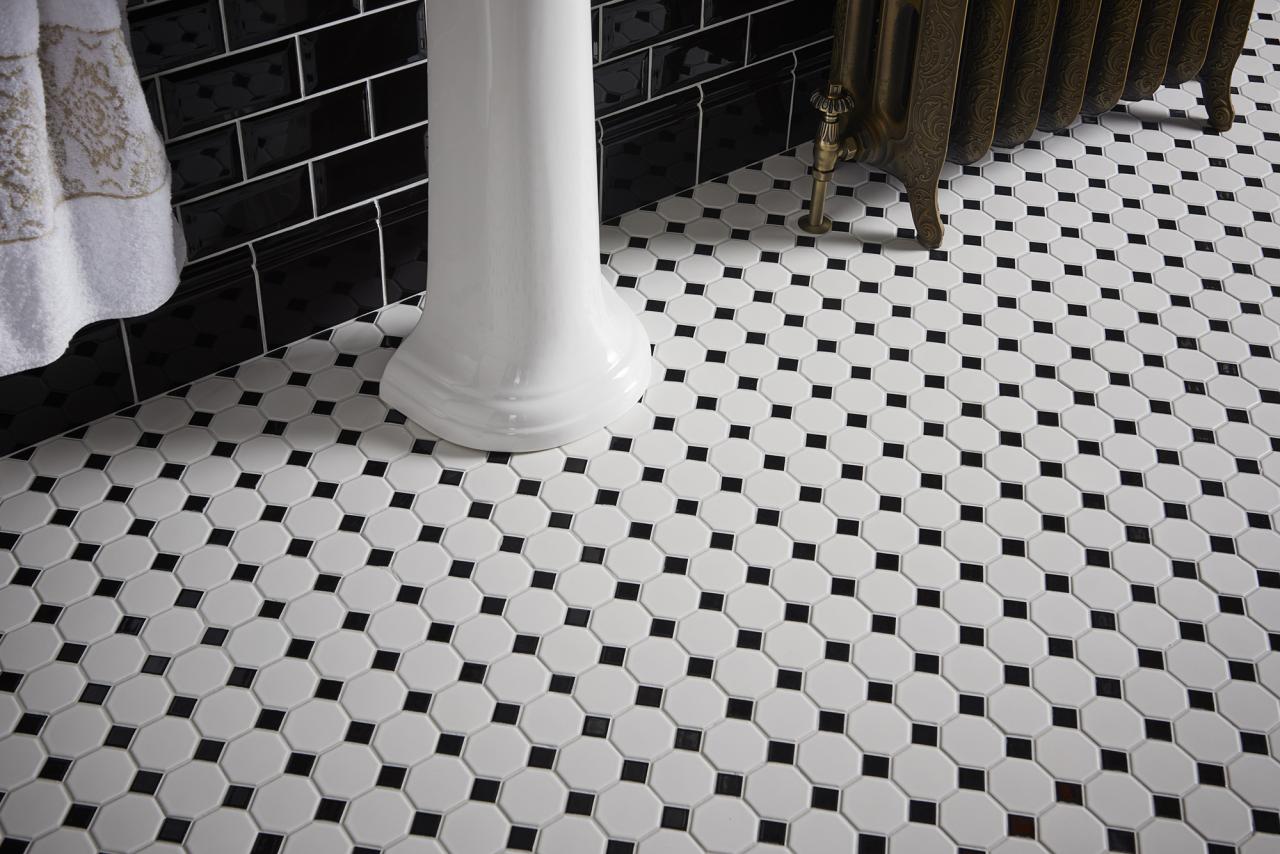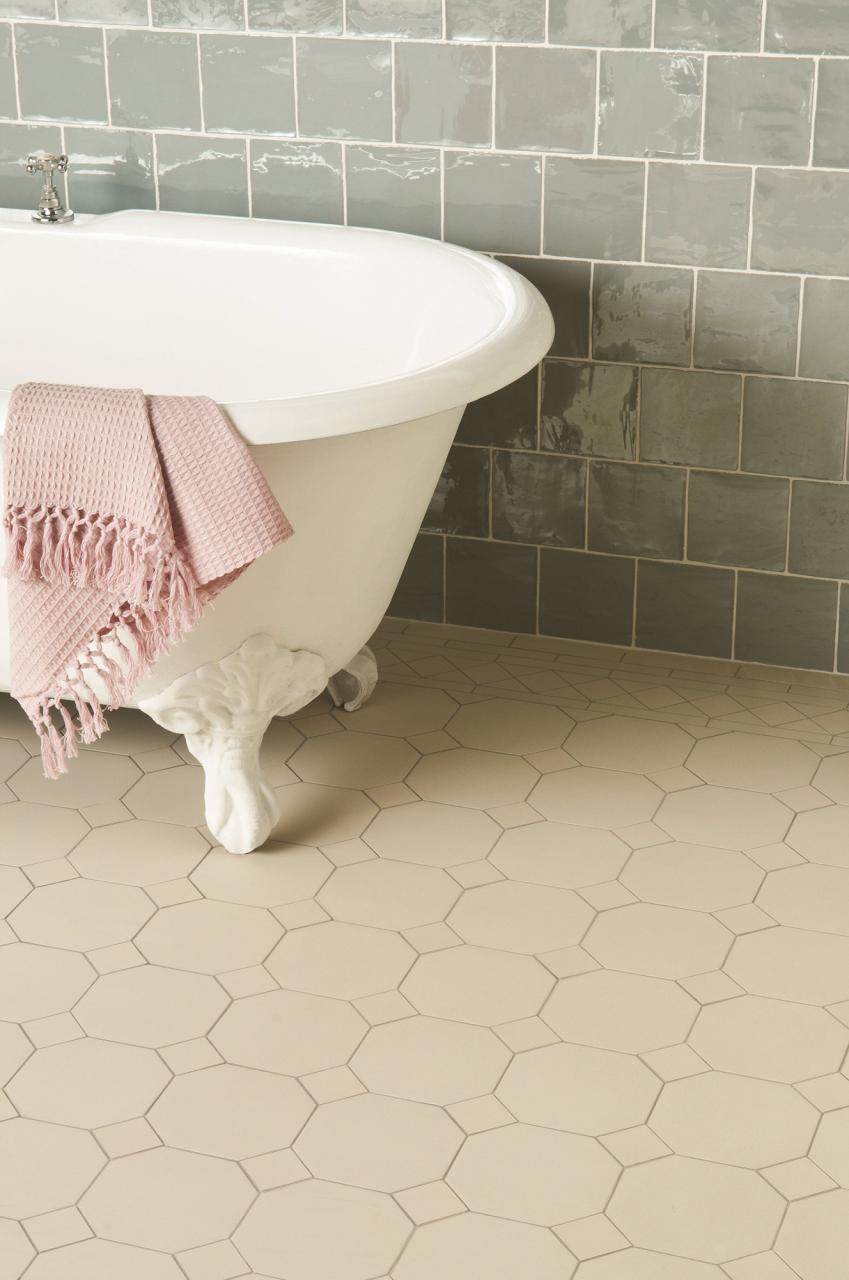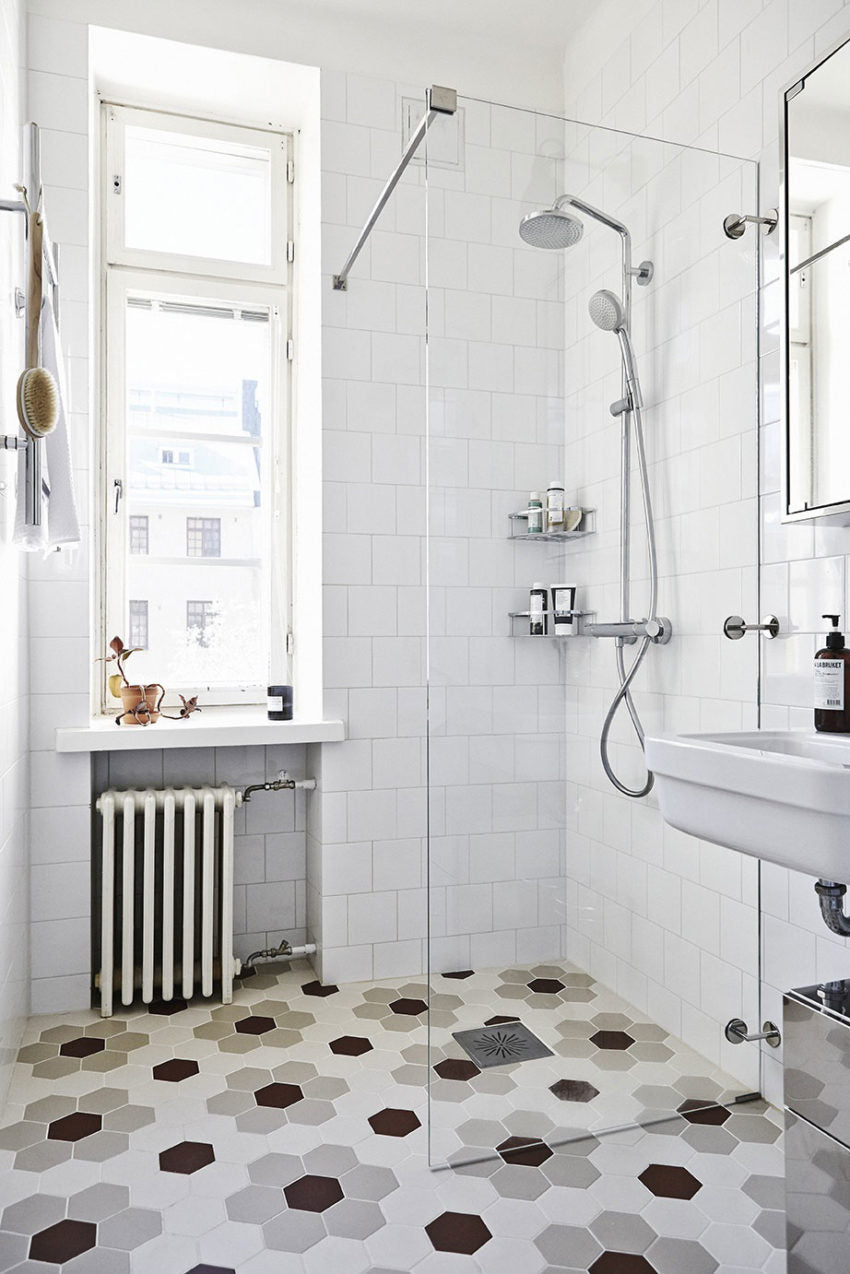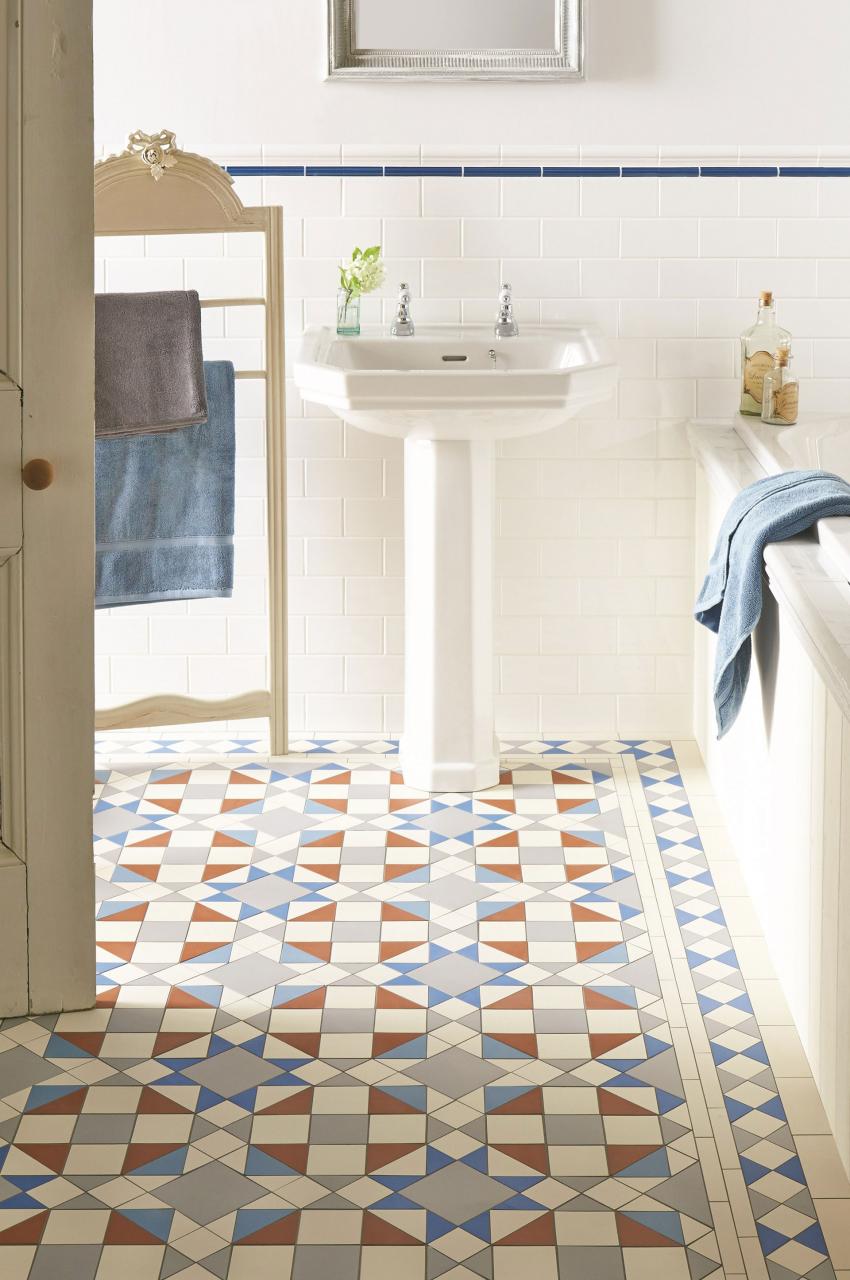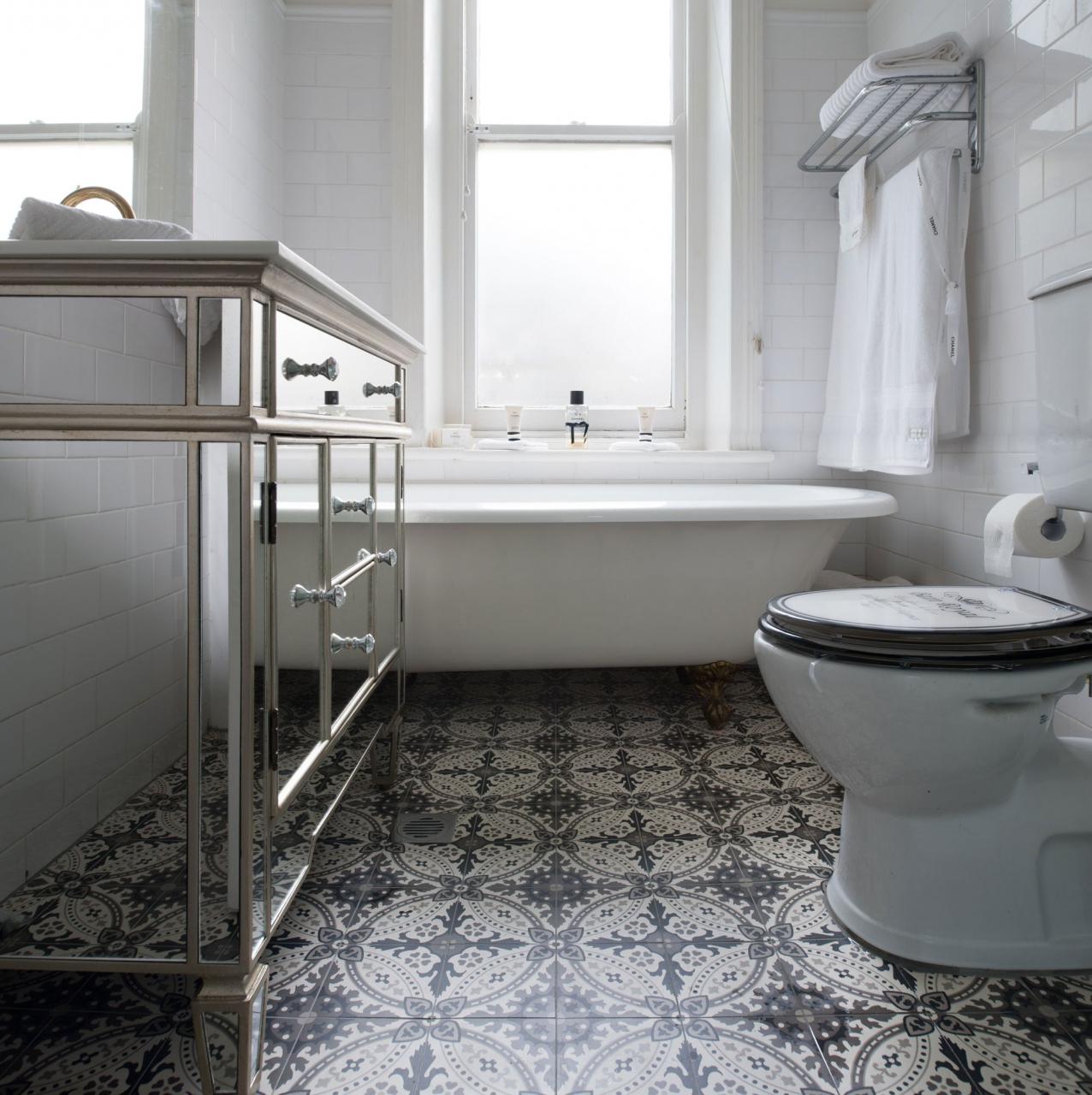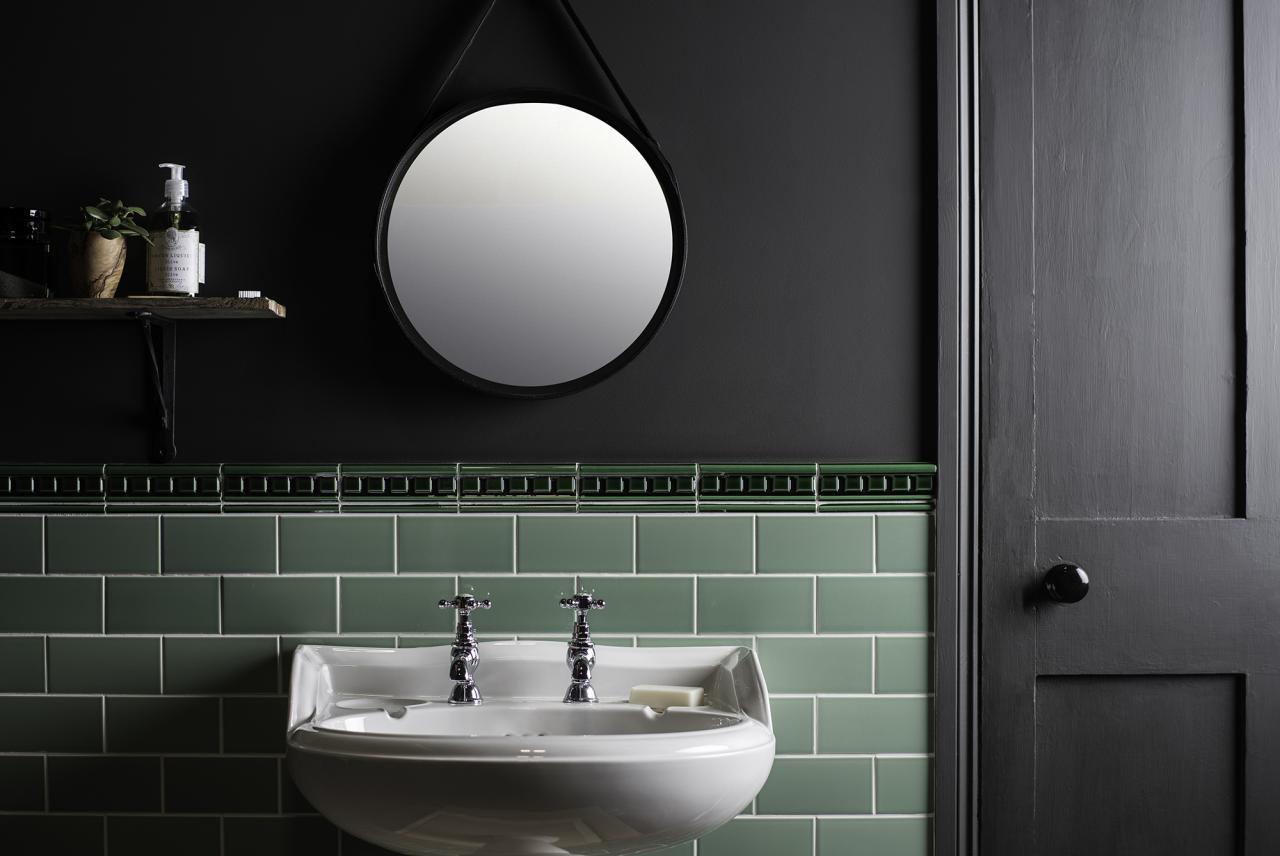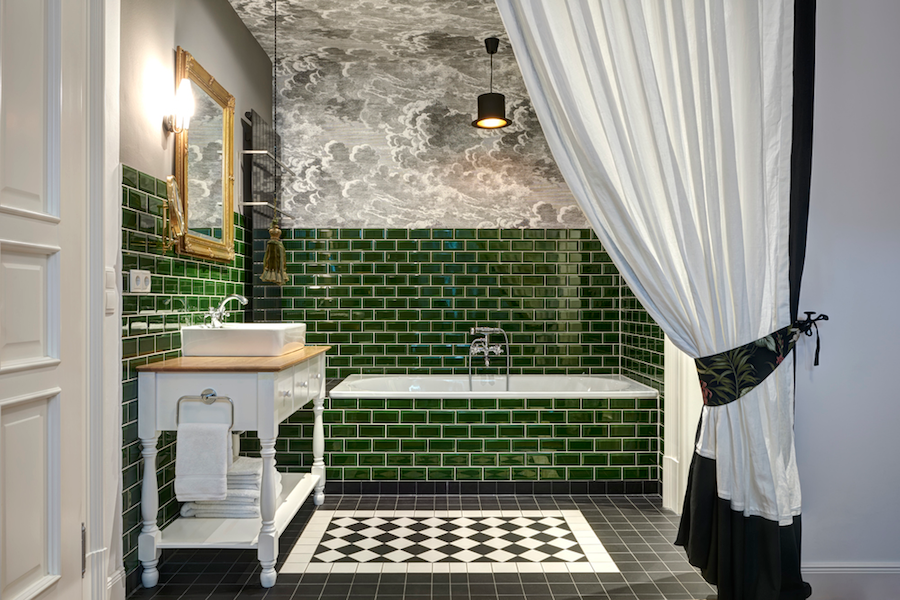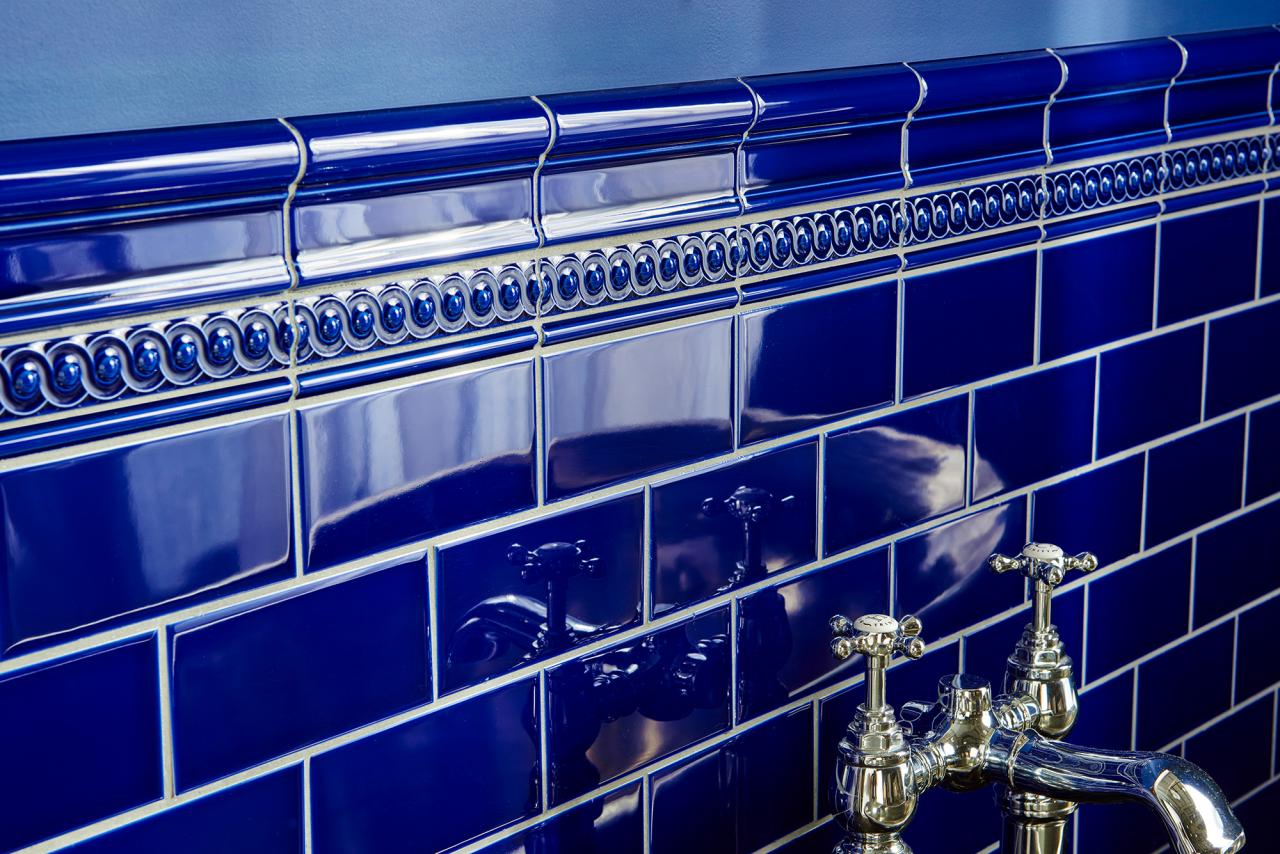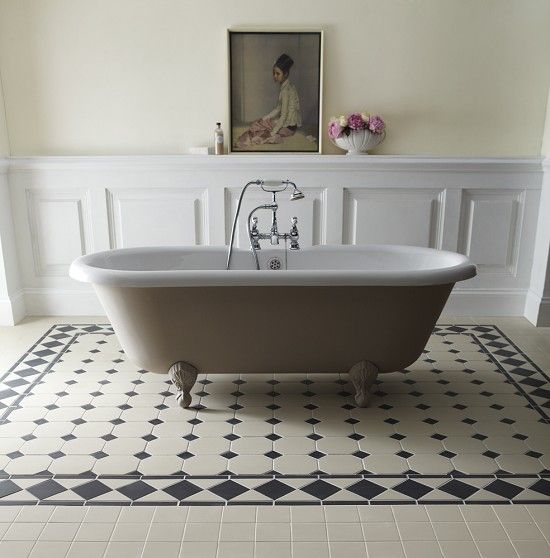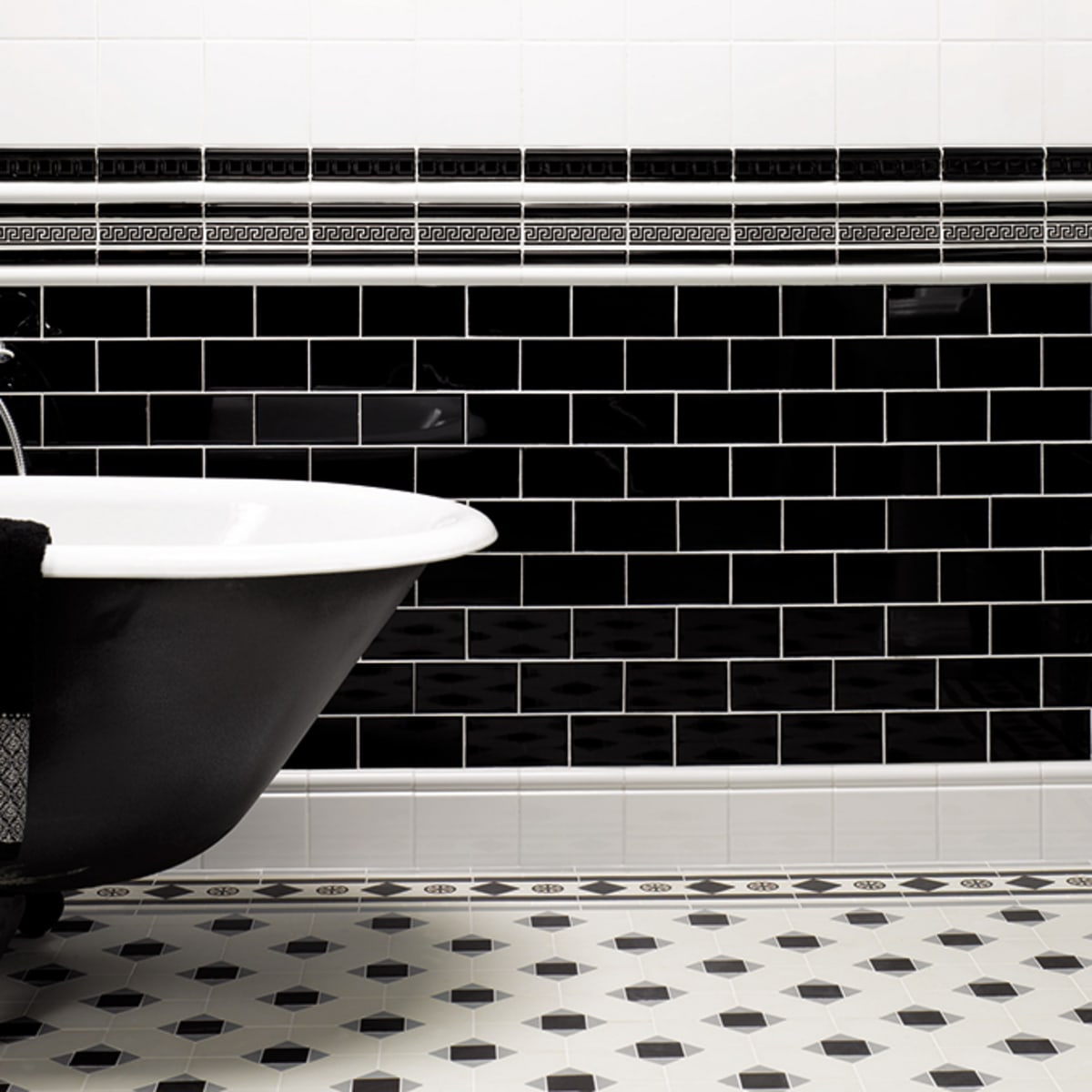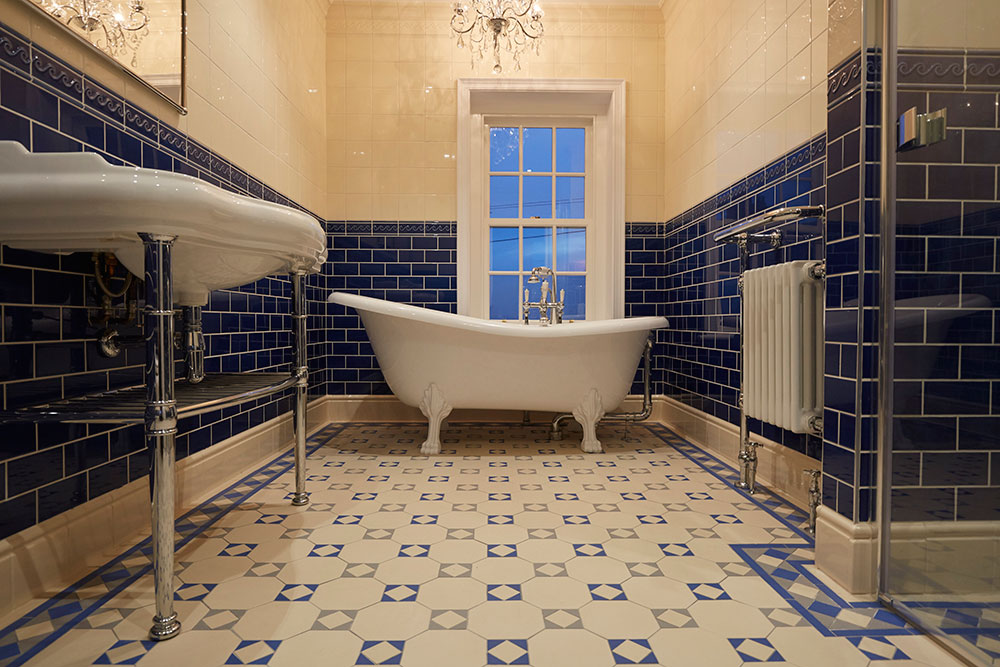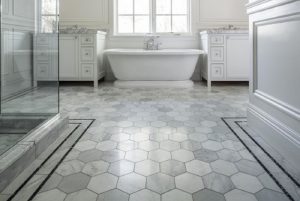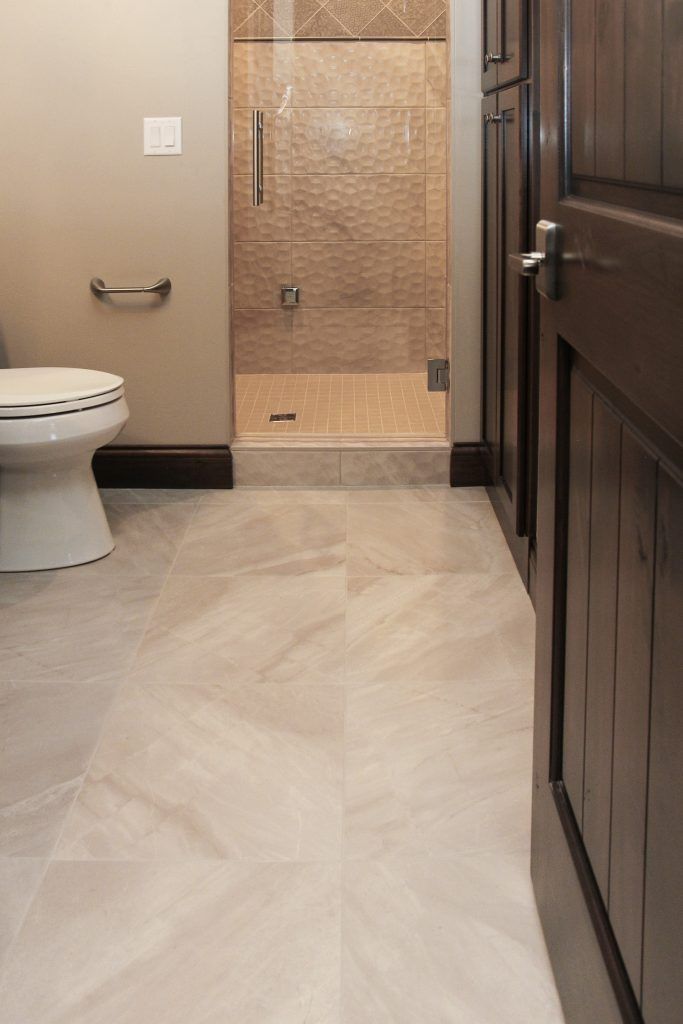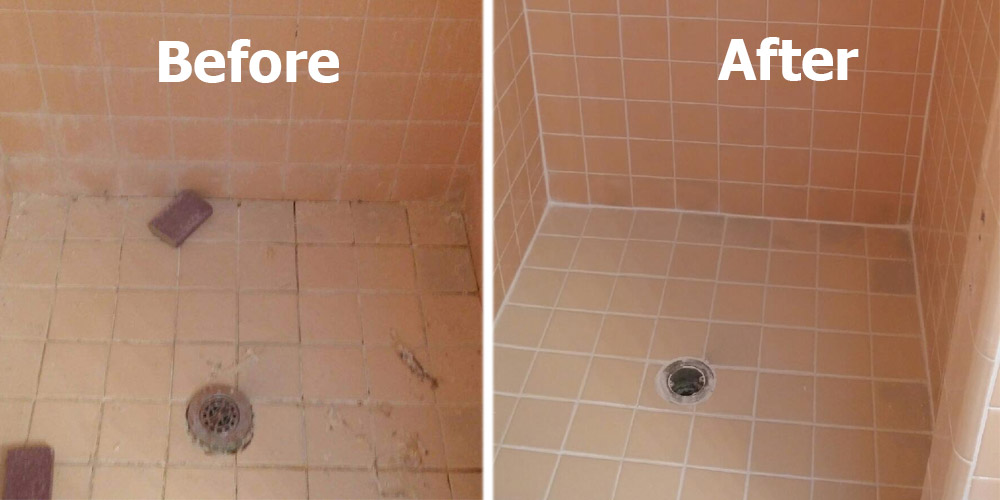The History and Charm of Traditional Victorian Bathroom Tiles
I’ve always been fascinated by the timeless elegance of traditional Victorian bathroom tiles. These intricate designs have a rich history that dates back to the 19th century, when the Victorian era was at its peak. It was a time of grandeur and opulence, and this was reflected in the stunning tilework found in homes across Britain. The beauty of these tiles lies not only in their intricate patterns but also in the stories they tell about the era’s craftsmanship and artistic sensibilities.
- The Victorian Obsession with Detail
Victorian tiles are a perfect example of the era’s obsession with detail and ornamentation. During the 19th century, tile-making became an art form, with manufacturers competing to create the most intricate and beautiful designs. These tiles were often used in bathrooms to add a touch of luxury to an otherwise utilitarian space. I love how each tile seems to tell a story, with patterns that range from floral motifs to geometric designs, all meticulously crafted to perfection. - The Influence of the Industrial Revolution
The Industrial Revolution played a significant role in the popularity of Victorian tiles. With advances in manufacturing technology, tiles became more affordable and accessible to the middle class. This allowed more homeowners to incorporate these beautiful designs into their homes. I find it fascinating how these tiles reflect the era’s technological advancements while still maintaining their handmade charm. - Victorian Tiles as Status Symbols
During the Victorian era, bathrooms were a symbol of status and wealth, and the tiles used in these spaces were a reflection of that. The more intricate and elaborate the design, the more prestigious the bathroom was considered. I’ve always been drawn to the idea of using these historical tiles to add a touch of old-world elegance to my bathroom, making it feel like a little piece of history. - The Rise of Art Nouveau Influence
Toward the end of the Victorian era, the Art Nouveau movement began to influence tile designs. This brought a more organic and flowing aesthetic to the patterns, with floral and nature-inspired motifs becoming increasingly popular. I’ve always been a fan of Art Nouveau’s graceful lines, and I love how these influences blend with the more traditional Victorian designs to create something truly unique. - The Enduring Appeal of Victorian Tiles
What I find most compelling about Victorian tiles is their enduring appeal. Despite being over a century old, these designs still feel relevant and stylish today. The craftsmanship and attention to detail that went into creating them is something that I think modern tiles often lack. Incorporating Victorian tiles into my bathroom allows me to bring a piece of that history into my home, creating a space that feels both timeless and elegant. - Reviving Tradition in Modern Homes
In today’s world, there’s a growing interest in reviving traditional craftsmanship, and Victorian tiles are at the forefront of this movement. Many homeowners, like myself, are drawn to the idea of bringing a touch of the past into their modern homes. Whether it’s through a full bathroom renovation or just adding a few decorative accents, Victorian tiles offer a way to connect with history while creating a space that feels unique and personal.
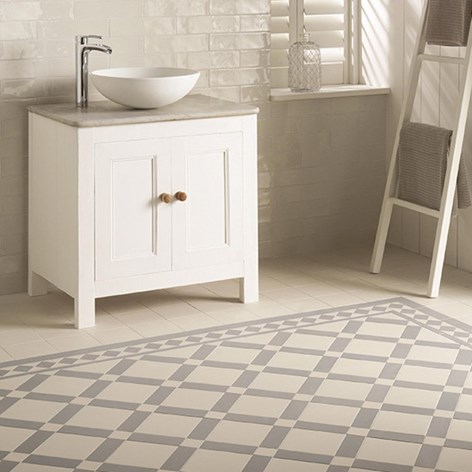
Popular Patterns and Designs in Victorian Bathroom Tiles
When I first started exploring traditional Victorian bathroom tiles, I was blown away by the sheer variety of patterns and designs. From intricate mosaics to bold geometric shapes, Victorian tiles offer a world of possibilities for anyone looking to add a touch of elegance to their bathroom. Here are some of the most popular patterns and designs that have stood the test of time and continue to inspire modern interiors.
Classic Floral Motifs
Floral patterns are a hallmark of Victorian tile design, and for good reason. These intricate motifs often feature delicate flowers, vines, and leaves that add a touch of nature to the bathroom. I love how these designs bring a sense of softness and beauty to the space, making it feel like a serene garden retreat. Whether it’s a subtle, muted floral pattern or a bold, colorful design, floral motifs are a timeless choice for any bathroom.
Geometric Patterns
Victorian tiles often feature geometric patterns that create a sense of order and structure. From classic checkerboard designs to more complex arrangements of shapes and lines, these patterns can add a touch of sophistication to any bathroom. I find that geometric tiles work particularly well in smaller spaces, where their clean lines can help create a sense of balance and harmony.
Majolica Tiles
Majolica tiles are a type of Victorian tile that features raised patterns and vibrant colors. These tiles were often used as decorative accents in bathrooms, adding a touch of luxury and opulence to the space. I’ve always been drawn to the rich, jewel-toned colors and intricate designs of Majolica tiles, and I love how they can instantly elevate the look of a bathroom.
Mosaic Tiles
Mosaic tiles are another popular design choice in Victorian bathrooms. These small, intricate tiles are arranged to create stunning patterns and images, often inspired by classical art and architecture. I love the way mosaic tiles can transform a bathroom into a work of art, with each tiny piece contributing to the overall design. Whether it’s a simple border or a full wall of mosaic tiles, this design is sure to make a statement.
Encaustic Tiles
Encaustic tiles are made by pressing different colored clays together to create intricate patterns that are embedded into the tile itself. These tiles were popular in Victorian bathrooms for their durability and vibrant colors. I find encaustic tiles to be a great choice for adding a touch of history to a bathroom, as their unique designs are often inspired by traditional patterns and motifs.
Subway Tiles
While subway tiles are often associated with more modern designs, they have their roots in the Victorian era. These simple, rectangular tiles were originally used in Victorian bathrooms for their practicality and ease of cleaning. I love the way subway tiles can create a clean, classic look in a bathroom, and they pair beautifully with more ornate Victorian designs for a balanced, timeless aesthetic.
Choosing the Right Color Palette for Victorian Bathroom Tiles
When it came time to choose a color palette for my Victorian bathroom tiles, I quickly realized that there were so many beautiful options to consider. The Victorians were known for their use of rich, bold colors, but they also appreciated the elegance of more subdued tones. Here’s what I learned about choosing the perfect color palette for a Victorian-inspired bathroom.
Rich Jewel Tones
One of the first things that drew me to Victorian bathroom tiles was their use of rich, jewel-toned colors. Deep blues, emerald greens, and ruby reds were all popular choices during the Victorian era, and they can add a touch of luxury and drama to a bathroom. I love how these bold colors can make a statement, turning a simple bathroom into a space that feels opulent and inviting.
Classic Black and White
For a more timeless and understated look, black and white is a classic Victorian color palette that never goes out of style. The contrast between the two colors creates a sense of elegance and sophistication, making it a perfect choice for a traditional bathroom. I decided to use black and white tiles in my own bathroom, and I love how the clean lines and bold contrast give the space a refined, polished look.
Soft Pastels
While bold colors were popular during the Victorian era, soft pastels were also a common choice for bathrooms. Pale pinks, blues, and greens can create a more delicate, feminine look that feels light and airy. I found that using pastel tiles in my bathroom gave the space a sense of calm and tranquility, making it feel like a peaceful retreat.
Earthy Tones
Earthy tones like terracotta, olive green, and ochre were also popular during the Victorian era, and they can add a warm, cozy feel to a bathroom. I’ve always loved the idea of bringing natural colors into my home, and using earthy tones in my bathroom helped create a sense of connection to the outdoors. These colors work particularly well with natural materials like wood and stone, creating a harmonious, grounded look.
Monochromatic Schemes
For a more modern take on Victorian design, a monochromatic color scheme can be a great choice. I decided to experiment with different shades of the same color in my bathroom, creating a subtle, layered effect that feels sophisticated and elegant. Monochromatic schemes are a great way to keep the design cohesive while still adding depth and interest to the space.
Accent Colors
If you prefer a more neutral color palette, adding a pop of color with accent tiles can be a great way to bring a touch of Victorian style to your bathroom. I chose to use a few bold, colorful tiles as accents in my mostly neutral bathroom, and I love how they add a bit of personality and flair without overwhelming the space. Whether it’s a single row of colorful tiles or a decorative border, accent colors can make a big impact in a small space.
How to Mix and Match Victorian Tiles for a Timeless Look
One of the things I love most about Victorian bathroom tiles is how versatile they are. There’s no need to stick to just one pattern or color; mixing and matching different tiles can create a truly unique and timeless look. Here’s how I approached mixing and matching tiles in my bathroom to create a space that feels both cohesive and visually interesting.
Start with a Focal Point
When mixing and matching tiles, it’s important to have a focal point that anchors the design. I started by choosing a bold, patterned tile for the floor of my bathroom, which became the centerpiece of the space. This gave me a foundation to build on, allowing me to mix in other tiles that complemented the main design without competing with it.
Balance Bold and Subtle Designs
To keep the design from feeling too busy, I made sure to balance bold, patterned tiles with more subtle, solid-colored ones. For example, I paired my intricate floor tiles with simple subway tiles on the walls, which helped create a sense of harmony in the space. I found that using a mix of bold and subtle designs allowed me to incorporate different styles without overwhelming the room.
Stick to a Consistent Color Palette
One of the most important things I learned when mixing and matching tiles is to stick to a consistent color palette. Even though I used a variety of patterns and textures in my bathroom, I made sure that all the tiles shared a common color scheme. This helped create a cohesive look that felt intentional rather than chaotic.
Vary Tile Sizes and Shapes
Another way to add interest to a bathroom design is by varying the sizes and shapes of the tiles. I decided to mix large, rectangular tiles with smaller, square ones to create a dynamic, layered effect. I found that using different sizes and shapes added depth to the design and made the space feel more visually engaging.
Incorporate Decorative Borders
One of the things I love most about Victorian tiles is the use of decorative borders to frame different areas of the bathroom. I used a row of decorative tiles to separate the floor from the walls, which helped define the space and add a touch of elegance. Decorative borders are a great way to tie different tile designs together while adding a touch of Victorian flair.
Trust Your Instincts
At the end of the day, mixing and matching tiles is all about trusting your instincts and creating a design that feels right for you. I experimented with different combinations until I found one that felt balanced and cohesive. Don’t be afraid to play around with different patterns, colors, and textures until you find a mix that works for your space.
The Best Materials for Traditional Victorian Bathroom Tiles
When I was choosing tiles for my Victorian-inspired bathroom, I quickly realized that the material of the tiles is just as important as the design. Victorian tiles come in a variety of materials, each with its unique qualities and characteristics. Here are some of the best materials to consider when creating a traditional Victorian bathroom.
Ceramic Tiles
Ceramic tiles were a popular choice during the Victorian era, and they remain a classic option today. These tiles are made from clay and fired at high temperatures, making them durable and water-resistant. I love how ceramic tiles can be glazed in a wide range of colors and finishes, allowing for endless design possibilities. Plus, they’re relatively affordable, making them a great option for those on a budget.
Porcelain Tiles
Porcelain tiles are another excellent choice for a Victorian bathroom. These tiles are similar to ceramic, but they’re made from a denser type of clay and fired at even higher temperatures, making them more durable and less porous. I chose porcelain tiles for my bathroom floor because they’re resistant to moisture and stains, making them perfect for a wet environment. Plus, they come in a wide variety of styles, from classic to contemporary.
Encaustic Cement Tiles
Encaustic cement tiles were popular during the Victorian era for their intricate patterns and vibrant colors. These tiles are made by pressing different colored clays together to create a design that’s embedded into the tile itself. I love how encaustic tiles can add a touch of history to a bathroom, with patterns that are often inspired by traditional Victorian designs. They’re also incredibly durable and can withstand heavy foot traffic.
Natural Stone Tiles
If you’re looking for a more luxurious option, natural stone tiles can add a touch of elegance to a Victorian bathroom. Marble, limestone, and travertine were all popular choices during the Victorian era, and they continue to be a favorite for those looking to create a high-end, timeless look. I decided to use marble tiles in my shower, and I love how they add a sense of sophistication to the space. Just keep in mind that natural stone requires a bit more maintenance than other materials.
Terracotta Tiles
Terracotta tiles were another popular choice during the Victorian era, particularly in more rustic, country-style homes. These tiles are made from natural clay and have a warm, earthy tone that can add a cozy, inviting feel to a bathroom. I found that terracotta tiles work particularly well in a Victorian-inspired bathroom when paired with other natural materials like wood and brass.
Glass Tiles
While glass tiles weren’t commonly used in Victorian bathrooms, they can be a great way to add a modern twist to a traditional design. I decided to incorporate a few glass accent tiles into my Victorian bathroom to add a touch of sparkle and light. Glass tiles are perfect for adding a bit of shimmer to a space, and they’re also easy to clean and maintain.
Tips for Installing and Maintaining Victorian Bathroom Tiles
When I decided to install Victorian bathroom tiles in my home, I quickly realized that there’s more to it than just choosing the right design. Proper installation and maintenance are key to ensuring that your tiles look beautiful for years to come. Here are some tips that I found helpful when installing and maintaining my Victorian tiles.
Prepare the Surface
Before installing any tiles, it’s important to properly prepare the surface. I made sure that the walls and floors in my bathroom were clean, dry, and free of any debris or imperfections. This helps ensure that the tiles adhere properly and that the installation is smooth and even. If you’re working with an older home, it’s also a good idea to check for any underlying issues like moisture or structural damage before you start.
Use the Right Adhesive
When it comes to installing tiles, using the right adhesive is crucial. I made sure to choose an adhesive that was specifically designed for the type of tiles I was using, as well as for the environment in which they would be installed. For example, I used a waterproof adhesive in my shower to ensure that the tiles would stay in place even in a wet environment. It’s also important to follow the manufacturer’s instructions for mixing and applying the adhesive.
Take Your Time with Grouting
Grouting is one of the most important steps in the tile installation process, and it’s worth taking your time to get it right. I chose a grout color that complemented my tiles, and I made sure to apply it evenly and cleanly. It’s also important to seal the grout after it’s dried to protect it from moisture and stains. I found that sealing the grout not only helps preserve the look of the tiles but also makes cleaning and maintenance easier.
Regular Cleaning and Maintenance
Once your Victorian tiles are installed, regular cleaning and maintenance are key to keeping them looking their best. I make sure to clean my tiles regularly with a mild, non-abrasive cleaner to prevent dirt and grime from building up. It’s also important to avoid using harsh chemicals or abrasive scrubbers, as these can damage the tiles and grout over time. For natural stone tiles, I recommend using a cleaner that’s specifically designed for that material to prevent any damage.
Seal Your Tiles
If you’re using natural stone tiles or encaustic cement tiles, sealing them is an important step in maintaining their beauty. I made sure to seal my tiles shortly after installation to protect them from moisture, stains, and wear. Depending on the type of tile and the environment, you may need to reseal them every year or two to keep them in good condition. Sealing your tiles not only helps preserve their appearance but also makes them easier to clean and maintain.
Repair Any Damage Promptly
Even with proper care, tiles can sometimes crack or become damaged over time. I’ve found that it’s best to repair any damage as soon as possible to prevent it from getting worse. For minor cracks or chips, you can often repair them with a tile repair kit. However, for more serious damage, it’s best to replace the affected tiles to ensure the integrity of the installation.
Incorporating Victorian Tiles into Modern Bathroom Designs
When I decided to incorporate Victorian tiles into my modern bathroom, I was excited by the challenge of blending traditional and contemporary styles. Victorian tiles have such a timeless elegance, and with a little creativity, they can be seamlessly integrated into a modern bathroom design. Here’s how I approached the process and achieved a look that feels both classic and contemporary.
Choose a Modern Layout
One of the first decisions I made was to choose a modern layout for the tiles. Instead of sticking to a traditional Victorian layout, I opted for a more contemporary arrangement, such as a herringbone or chevron pattern. This helped give the bathroom a fresh, updated look while still incorporating the timeless beauty of Victorian tiles. I found that experimenting with different layouts allowed me to create a design that felt unique and personalized.
Mix Traditional and Modern Elements
To create a cohesive look, I mixed traditional Victorian tiles with more modern elements in the bathroom. For example, I paired intricate, patterned tiles with sleek, minimalist fixtures and contemporary lighting. This contrast between old and new helped create a balanced design that felt neither too traditional nor too modern. I love how the Victorian tiles add character and warmth to the space, while the modern elements keep the overall design feeling fresh and current.
Use Victorian Tiles as Accents
If you’re hesitant to commit to a full Victorian tile installation, using them as accents can be a great way to incorporate their beauty into a modern bathroom. I decided to use Victorian tiles as a decorative border around the mirror and as a backsplash behind the sink. These small touches add a touch of elegance to the space without overwhelming the design. I found that using Victorian tiles as accents allowed me to enjoy their beauty while still maintaining a modern aesthetic.
Play with Color and Texture
One of the things I love most about Victorian tiles is their rich colors and textures. To create a modern look, I played with different color combinations and textures in my bathroom. For example, I paired glossy Victorian tiles with matte modern tiles to create a dynamic, layered effect. I also experimented with contrasting colors, such as pairing bold, jewel-toned Victorian tiles with neutral, modern tiles. This helped create a visually interesting design that feels both classic and contemporary.
Incorporate Modern Materials
To further modernize the design, I incorporated modern materials like glass, chrome, and concrete into the bathroom. I found that using these materials alongside Victorian tiles helped create a balanced look that felt both timeless and up-to-date. For example, I used glass shelves and chrome fixtures to add a sleek, modern touch to the space, while the Victorian tiles added warmth and character.
Keep the Overall Design Simple
To avoid overwhelming the space, I kept the overall design simple and understated. I focused on using Victorian tiles as a focal point and kept the rest of the bathroom design clean and minimal. This helped create a sense of balance and harmony in the space, allowing the beauty of the Victorian tiles to shine without competing with other design elements. I found that keeping the design simple allowed the tiles to take center stage and made the bathroom feel both elegant and modern.
Traditional Classic Bathroom Tile Ideas
Ways To Create A Stunning Victorian Bathroom With Tiles
Classic Bathroom Tile Ideas
Inspiring Victorian Style Bathroom with a Modern Touch Victorian
Historic Bathrooms: An Evolution – Period Homes
Victorian Floor Tile Gallery
Related Posts:
- Bathroom Tile Styles Ideas
- Modern Ceramic Bathroom Tiles
- Bathroom Tiles In Leicester
- Install Ceramic Bathroom Tile
- Large White Gloss Bathroom Tiles
- Bathroom Tiles Joondalup
- Bathroom Tile Laminate Flooring
- Bathroom Tiles Design In Philippines
- Bathroom Tiles Cleaning Solution
- Cleaning Bathroom Tile With Bleach
